How to properly grow honeysuckle from berries: step by step instructions
The seed method of reproduction of honeysuckle is resorted to when it is necessary to obtain a large number of plants. It is widely used by landscape designers to create unpretentious hedges and breeders in their scientific work. With the correct sowing, the plant quickly emerges and develops, it is easier to adapt to growing conditions. We will tell you how to plant and grow honeysuckle from berries.
The content of the article
Is it possible to grow honeysuckle from berries at home
Freshly harvested honeysuckle seeds have almost 100% germination, so it is so important to start pre-sowing preparation and sowing itself immediately after picking the berries.
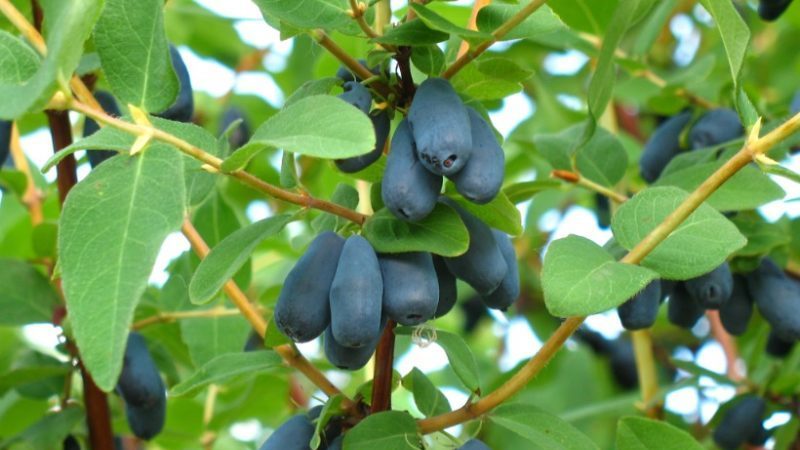
Advantages and disadvantages of the method
Seeds propagate both fruit and decorative plant varieties.
This method has several advantages:
- the resulting seedlings adapt more easily to environmental conditions, in contrast to seedlings obtained from cuttings or cuttings;
- seeds germinate under conditions close to ideal for the crop, which protects the seedlings from death;
- simplicity and cost-effectiveness of the method.
Among the negative features, gardeners distinguish:
- frequent discrepancy between varietal characteristics with the parent plant (which is especially undesirable when propagating fruit honeysuckle);
- dependence of seed viability on the quality of pollination of flowers on the mother plant;
- late fruiting of honeysuckle grown from seeds - after 5-6 years;
- the need to pay increased attention to delicate seedlings (only 50% survive to the stage of a 1-2 year old seedling).
The key to good germination and further formation of seedlings is competent preparation of seeds and soil.
Suitable varieties of honeysuckle
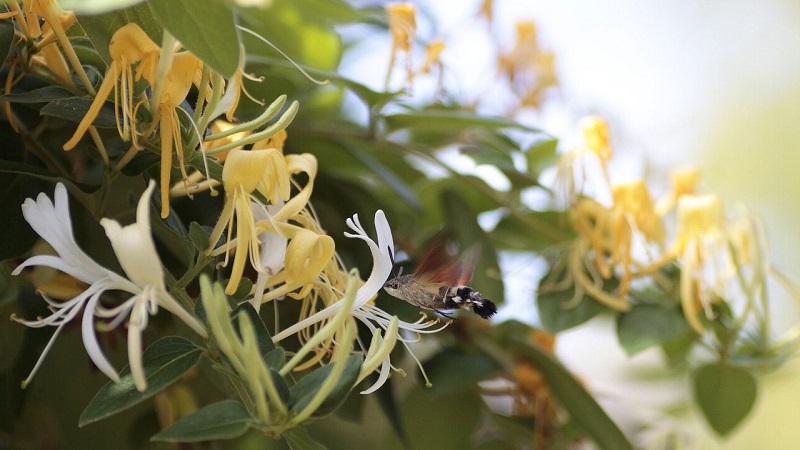
All are suitable for seed propagation. decorative types of honeysuckle: Brown curly honeysuckle, golden, eastern, Tatar, Korolkova and others. Fruit hybrids and varieties also sprout well, but whether they will fully meet expectations is unknown. According to statistics, 50% of the total number of seeds sown will sprout with some differences from the mother bush.
There are seeds on sale edible honeysuckle of the following varieties: Bakchar giant, Yugan, Giant's daughter, Narymskaya, Indigo jam, Morena, etc.
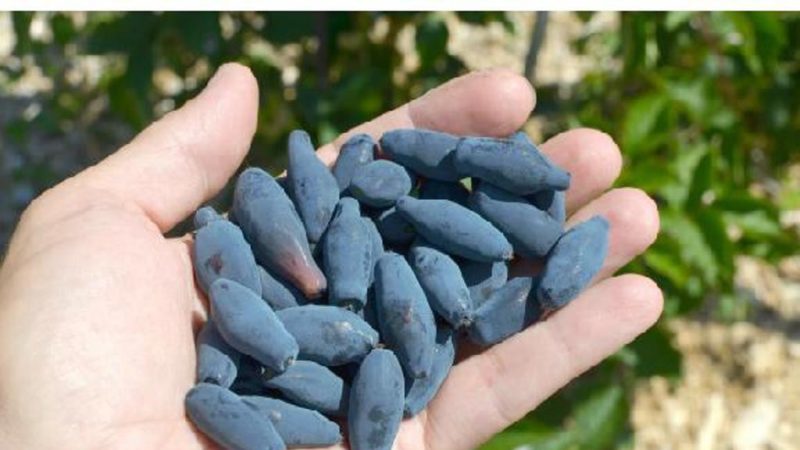
How to get seeds from berries
Honeysuckle berries in full botanical ripeness tend to shatter. Overripe fruits are no longer suitable for fresh consumption, but are ideal for reproduction. If you plan to propagate fruit honeysuckle by seeds, when harvesting, leave 20-30 berries on the bush until fully ripe. Lay a film under the bushes so as not to lose them when shedding.
Each fruit contains 5-18 small seeds. To extract them, the berries are carefully rubbed through a sieve or simply crushed by hand. Water is poured into a container with fruits and shaken vigorously, then drained. Seeds are carefully picked and laid out on paper to dry.
Reference. Honeysuckle seeds remain viable for a long time. After a year, 70-75% of seedlings emerge, after 3 - 20-50%.
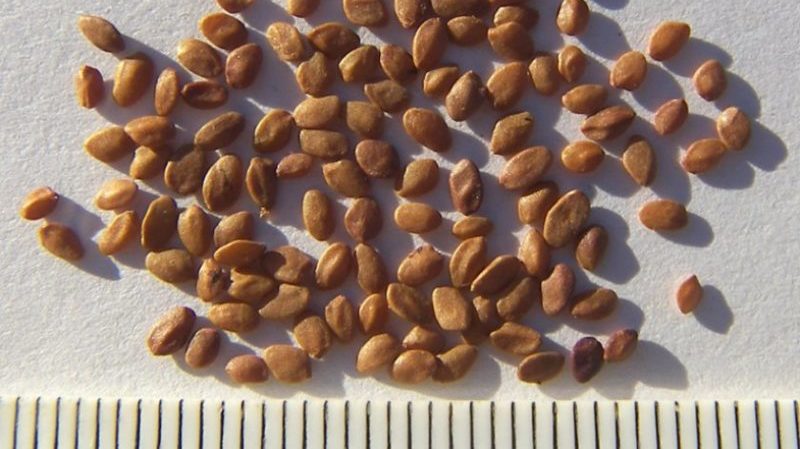
Landing dates
Gardeners practice different timing and methods of sowing seeds:
- Winter. At the end of October - beginning of November, dry seeds are sown on a prepared bed and covered with a mixture of humus and peat (1: 1) with a layer of 1-1.5 cm.It is believed that winter seedlings are more resistant to temperature changes, unfavorable factors, diseases, since they have undergone natural hardening (stratification).
- In spring, when the weather is warm and the daylight hours are longer. In central Russia, this is mid-April - early May. Honeysuckle seedlings are not afraid of a drop in temperature, but a lack of sunlight will lead to their death.
- Summer. Sowing takes place immediately after harvesting the early varieties (mid-June). The seedlings still have time before winter in order to build up a sufficient amount of root ball and get stronger. To grow comfortably, seedlings need a constant level of moisture and nutrient supply.
- For seedlings. This growing method makes it much easier to create ideal conditions for plant growth. Indoors, they are protected from sudden weather surprises. It is convenient to sow seeds directly into peat pots, 2-3 pieces.
When growing seedlings, do not forget to moisten the soil in the pots in a timely manner, preventing it from drying out.
Training
Before sowing, everything you need should be at hand: tools, seed material and a pre-prepared soil mixture.
Seeds
For sowing, the seeds do not require special preparation. They are sown dry.
The soil
Soil for germinating honeysuckle seeds a few days before sowing is dug onto a shovel bayonet with the introduction of humus (0.5 buckets per 1 m2 soil) and complex mineral fertilizers, for example, nitroammofoski (20 g / m²). The soil must be disinfected from diseases and pests. The soil is spilled with hot (+ 70… + 80 ° C) dark pink solution of potassium permanganate. The next day, the site is completely ready for sowing.
If the honeysuckle will be grown by the seedling method, a substrate of the following composition is made:
- garden land (2 parts);
- humus (part 1);
- peat (1 part);
- river sand (1 part);
- complex mineral fertilizer.
All components are mixed until smooth and spilled with a solution of potassium permanganate.
Attention! If fertilizer is not at hand, it is replaced with sifted wood ash - a source of phosphorus and potassium.
Sowing capacity
When growing seedlings, boxes (wooden or plastic) are used. Before sowing, they are washed and scalded with boiling water.
Germination instructions
Freshly harvested seeds do not need additional measures of pre-sowing preparation and germination. If the seed is old (with a shelf life of 2-3 years), it is soaked in warm (+ 20 ... + 30 ° C) water for 4-5 hours.
Reference. To increase germination, the seeds are soaked in the Epin growth stimulator solution or aloe juice.
How to plant honeysuckle seeds correctly
Honeysuckle seeds are small, in appearance they resemble garden poppy seeds. The bed is leveled with a rake and grooves are made with a depth of 1.5-2 cm.The seeds are laid out manually with a step of 2-3 cm from each other. The distance between the rows is maintained at least 10 cm. The spread seeds are sprinkled with a thin layer of soil (no more than 1 cm).
After sowing landing need to be moistened. In order not to erode the soil, use a watering can with a sieve.
When honeysuckle is propagated by seeds at home, sowing is performed in boxes, peat pots or pallets. The last seeds are laid out in 1-2 pieces.
To accelerate germination, the crops are covered with foil.
Further care
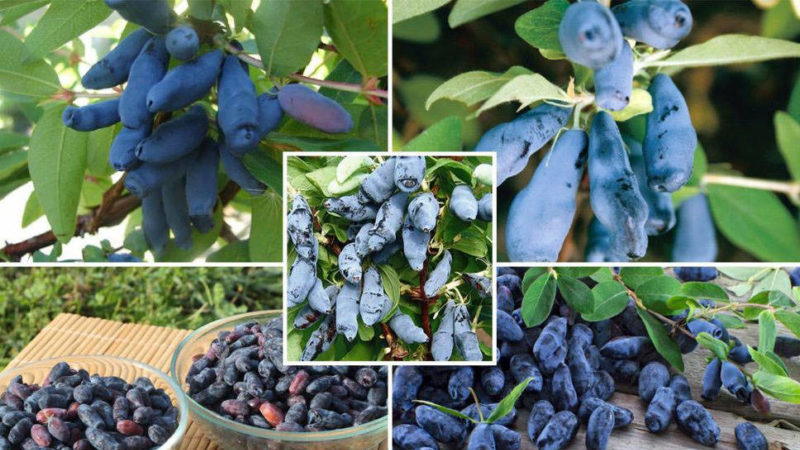
Seedlings appear on 15-18 days. Young sprouts are still very weak and need special care:
- Watering. Seedlings are watered more often than seedlings in the garden. The pots contain less soil, so they dry out faster - once every 2-3 days. Water for irrigation is used at room temperature.
- Hardening. Relevant for preparing seedlings or seedlings under a film for transfer to natural conditions. To do this, airing the crops daily for 2-3 hours, opening the film.
- Top dressing. The first is carried out in the phase of 3-4 true leaves with the fertilizer "Kemira Universal" or other complex fertilizer for seedlings.For this 15 g are dissolved in 10 l of water. Further feeding is regularly repeated every 14 days, alternating with a weak mullein solution.
- Weeding. Young shoots in the early days grow more slowly than weeds. Deprived of food and light, among weeds, seedlings may die.
- Formation. When 4-5 true leaves appear in the seedlings, pinch the growth point in order to provoke lateral branching. The next pinching is done when the side branches have 3-4 buds. Correct crown formation will make the plant beautiful and productive.
By the end of the summer of the first year, young plants will get stronger.
Protection against diseases and pests
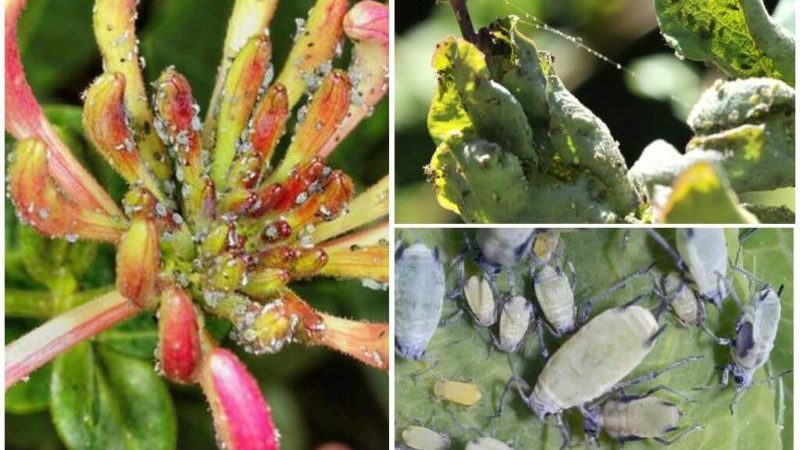
The decorative and edible honeysuckle has many enemies in the garden. The most dangerous of them:
- Honeysuckle mite. It actively develops in humid conditions with a thickened planting. Brown shapeless spots appear on the leaves. The leaves curl around the edges and dry out.
- Aphid. It attacks en masse, causing abundant yellowing of the shrub and leaf fall.
- Shield. These are small pests, covered from above with a protective shell - a shield. The insect completely covers the trunks of the bush, sucking juices from the plant.
- Caterpillars of butterflies... They gnaw passages in the leaves, reducing the overall decorative effect of the shrub.
If any of the listed pests is detected, the planting is treated with systemic insecticides ("Actellik", "Confidor"). To prepare the working fluid, 2 ml of the drug is dissolved in 1 liter of water.
In cold and rainy weather, fungal diseases (ramulariasis, cercosporosis, powdery mildew) are dangerous for honeysuckle. The best means of their treatment is preventive irrigation (once every 3 weeks) of the plantation with a solution of "HOM" or Bordeaux liquid.
Useful tips on the topic
Agronomists advise planting at least 4-6 varieties of honeysuckle on the site. The whole secret is in cross-pollination: the more different pollen falls on the flower, the more abundant and better the berry harvest will be.
Honeysuckle has a weak resistance to severe frosts. After wintering, frost cracks are often observed on the stems of the shrub: the bark on the shoots bursts, and a fungus settles in the cracks that appear. If your honeysuckle has such shoots, they must be cut out, and the shrub must be treated with Bordeaux liquid.
Plants, planted in the ground not by seeds, but by a ripe berry, will enter fruiting a year earlier.
Conclusion
Honeysuckle is an unpretentious and beautiful garden plant. An extensive species and varietal diversity allows the summer resident to grow a crop of tasty vitamin berries and decorate the site with decorative forms of culture.
Many gardeners cannot afford to buy a large number of varieties. If it is not possible to get a shoot or stalk of the desired variety from a friend, the honeysuckle is propagated by seed. This distribution option is the cheapest, available, but not always meeting the owner's expectations.